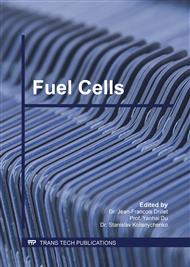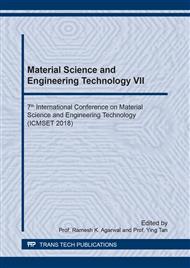p.149
p.154
p.160
p.165
p.170
p.175
p.180
p.185
p.190
Material of High Temperature Heat Exchanger in Fuel Cell System
Abstract:
Solid Oxide Fuel Cell (SOFC) systems are considered to be the most competitive green energy technology in the future because of their high energy conversion rates, low emissions and multiple fuels available. High temperature heat exchanger plays an important role in the system. The process system requires the design of heat exchangers to achieve operating temperature (700-800 °C), cross-temperature (>500°C) and low pressure drop in the smallest space, which is a challenge to the choice of materials. In this paper, the performances (Tensile strength, yield strength, linear expansion coefficient, and thermal conductivity coefficient) and price of high temperature alloy materials (304H, 310S, incoloy800H and Incoloy625) in the current application environment are compared. The applicable material (310S) of heat exchanger is determined. It provides a material basis for research and development of high temperature heat exchangers in SOFC system and commercialization.
Info:
Periodical:
Pages:
170-174
Citation:
Online since:
April 2019
Authors:
Keywords:
Price:
Сopyright:
© 2019 Trans Tech Publications Ltd. All Rights Reserved
Share:
Citation:



